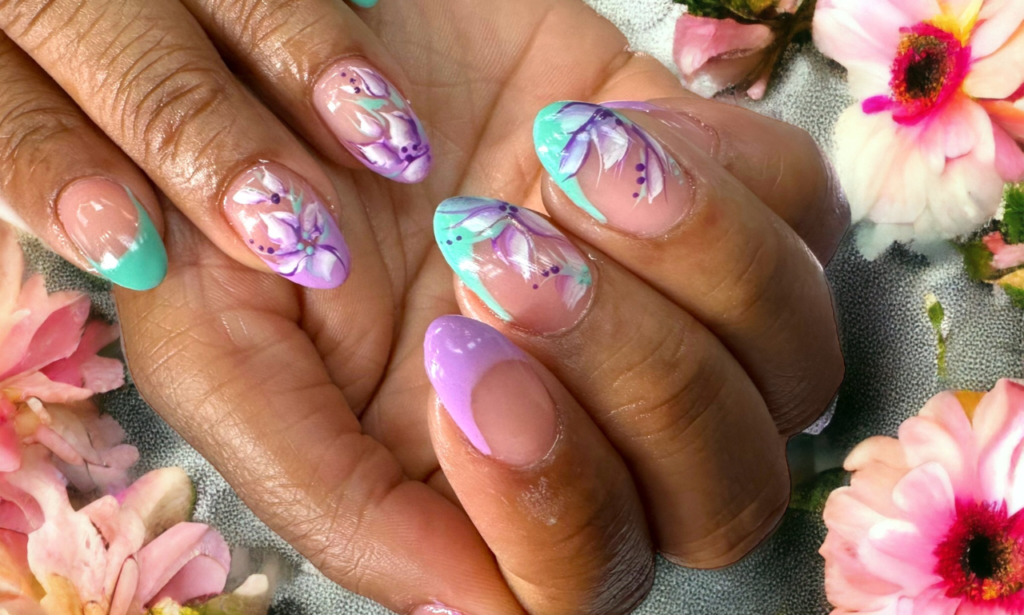Nail art has become increasingly popular, offering individuals the opportunity to express themselves creatively through their nails. Two of the most common techniques used for nail art are acrylic and gel. Both offer unique benefits and drawbacks, making it essential to understand the differences between the two before making a decision. In this article, we’ll explore the characteristics of acrylic Art and gel nail art, compare the two techniques, and help you determine which option is best suited for your needs.
Introduction
Acrylic and gel nail art have revolutionized the beauty industry, providing individuals with the ability to achieve long-lasting, beautiful nails. However, the choice between acrylic and gel can be overwhelming for many. Understanding the characteristics of each technique is crucial to making an informed decision and achieving the desired results.
Acrylic Nail Art

Acrylic nails are created by mixing a liquid monomer with a powdered polymer to form a paste, which is then applied to the natural nail and shaped into the desired length and thickness. Once applied, the acrylic hardens through a chemical reaction, resulting in durable and long-lasting nails.
Pros of Acrylic Nail Art:
- Acrylic nails are incredibly strong and durable, making them suitable for individuals with weak or brittle nails.
- Acrylic nails are easily customizable, allowing for a wide range of shapes, lengths, and designs.
- Acrylic nails can be easily repaired if they become damaged or broken.
- Acrylic nails are more affordable than gel nails, making them a budget-friendly option for many.
Cons of Acrylic Nail Art:
- Acrylic nails can be challenging to remove and may require filing or soaking in acetone.
- Acrylic nails may appear thicker and less natural-looking compared to gel nails.
- Improper application of acrylic nails can lead to lifting, chipping, or fungal infections.
- The strong odor associated with acrylic monomer may be off-putting to some individuals.
Also Read: How to Properly Remove Acrylics and Press-On Nails
Gel Nail Art
Gel nails are created by applying a gel-based polish to the natural nail and curing it under a UV or LED lamp. The gel polish hardens and adheres to the nail, resulting in a glossy and long-lasting finish. Gel nails are known for their flexibility and natural appearance.
Pros of Gel Nail Art:
- Gel nails are lightweight and flexible, providing a natural look and feel.
- Gel nails dry quickly under UV or LED light, reducing the risk of smudging or smearing.
- Gel nails are available in a wide range of colors and finishes, including glitter, matte, and chrome.
- Gel nails are easy to remove with minimal damage to the natural nail.
Cons of Gel Nail Art:
- Gel nails may not be as durable as acrylic nails and may chip or peel more easily.
- Gel nails require regular maintenance and may need to be filled in every few weeks as the natural nail grows.
- Gel nails may be more expensive than acrylic nails, especially if applied by a professional.
- Gel nails may not be suitable for individuals with sensitive skin or allergies to UV light.
Also Read: Gel Nail Art vs Traditional Polish
Comparison Between Acrylic and Gel Nail Art

When comparing acrylic and gel nail art, several factors should be considered:
Differences in Application Process:
- Acrylic nails require mixing of liquid monomer and powdered polymer, while gel nails involve applying gel polish directly to the nail.
- Acrylic nails harden through a chemical reaction, while gel nails cure under UV or LED light.
Durability and Maintenance:
- Acrylic nails tend to be more durable and resistant to chipping or peeling.
- Gel nails may require more frequent maintenance, including filling in and repolishing every few weeks.
Cost Considerations:
- Acrylic nails are generally more affordable than gel nails, both in terms of initial application and maintenance.
- Gel nails may be more expensive due to the cost of gel polish and the need for a UV or LED lamp.
Versatility in Design Options:
- Both acrylic and gel nails offer endless design possibilities, including colors, finishes, and embellishments.
- Gel nails may provide a slightly more natural-looking finish, while acrylic nails offer greater flexibility in shaping and length.
Choosing the Right Option for You
Ultimately, the choice between acrylic and gel nail art comes down to personal preference and lifestyle considerations. If you’re looking for durability and affordability, acrylic nails may be the best option for you. However, if you prefer a natural look and easy maintenance, gel nails may be more suitable. Consider factors such as your budget, desired nail length and shape, and tolerance for maintenance when making your decision.
Conclusion
Acrylic and gel nail art offer unique benefits and drawbacks, making them suitable for different individuals and preferences. Whether you opt for the strength and affordability of acrylic nails or the flexibility and natural appearance of gel nails, both techniques can help you achieve beautiful and long-lasting nails. By understanding the differences between acrylic and gel nail art and considering your personal needs, you can make an informed decision and enjoy stunning nail art designs that reflect your unique style and personality.
FAQs
- Can I switch between acrylic and gel nail art?
- Yes, you can switch between acrylic and gel nail art depending on your preferences and needs. Just be sure to properly remove the previous application before applying a new one.
- Are acrylic and gel nails suitable for everyone?
- While acrylic and gel nails are generally safe for most individuals, they may not be suitable for those with certain allergies or sensitivities. It’s essential to consult with a professional nail technician if you have any concerns.
- How long do acrylic and gel nails last?
- Acrylic nails typically last 2-3 weeks before needing a fill-in, while gel nails may last 2-4 weeks before requiring maintenance.
- Can I remove acrylic and gel nails at home?
- While it’s possible to remove acrylic and gel nails at home, it’s generally best to have them professionally removed to avoid damaging the natural nail.
- Can I apply nail polish over acrylic or gel nails?
- Yes, you can apply regular nail polish over acrylic or gel nails to change up your look. Just be sure to use a gentle nail polish remover that won’t damage the acrylic or gel.

